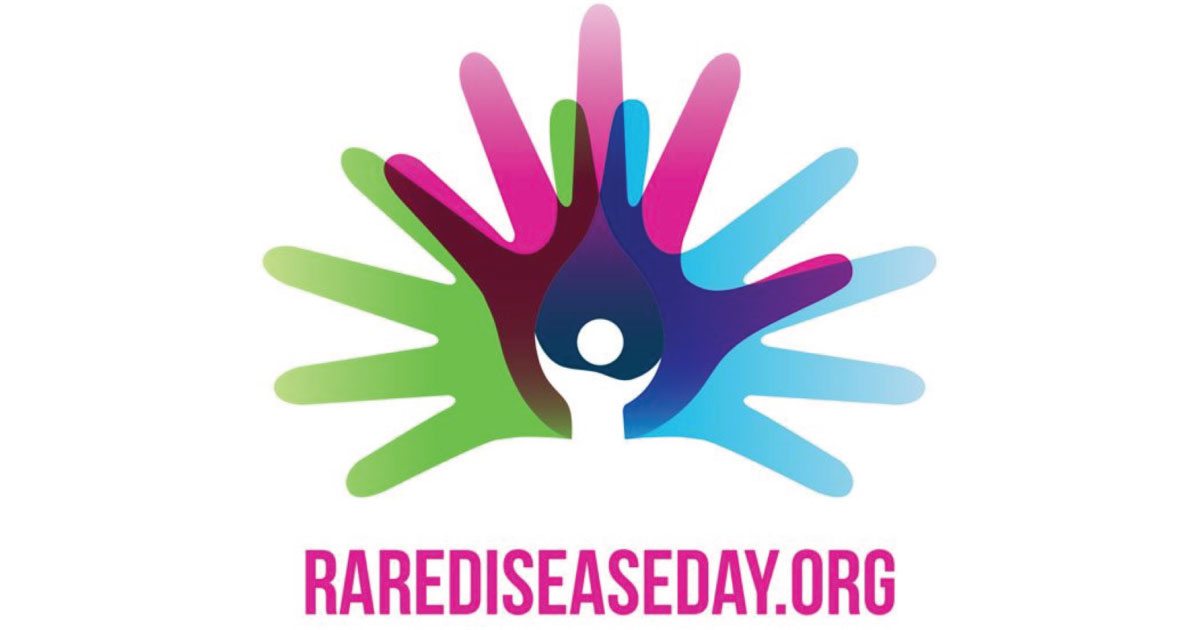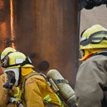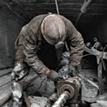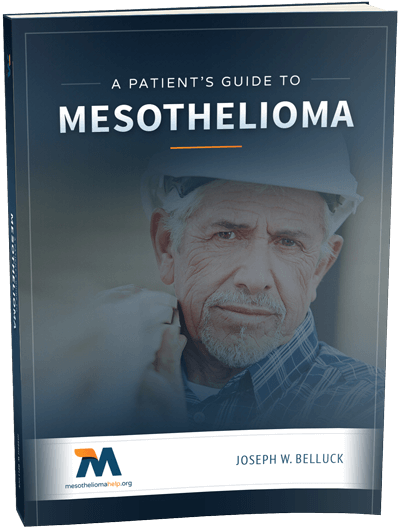Category: Mesothelioma

Why Is Mesothelioma Increasing?
There has been a significant increase in death rates from mesothelioma in the past decade. The increase in mesothelioma cases has been attributed to the lack of a complete ban on asbestos in the U.S., significant natural disasters that destroyed buildings containing asbestos materials, and the Sept. 11 terror attacks that exposed rescue workers to the cancer-causing material, among other factors.
How Many Cases of Mesothelioma Are Diagnosed Each Year?
 Because the life expectancy for mesothelioma patients is generally one to two years, the number of cases diagnosed each year can be measured relative to the death rate. From 2005 to 2015, researchers saw a 7.8 percent increase in death rates from mesothelioma, according to the latest Global Burden of Disease Study (GBD 2015) published Oct. 8, 2016, in The Lancet. The study notes that the number of deaths worldwide from mesothelioma in 2015 was 33,400.
Because the life expectancy for mesothelioma patients is generally one to two years, the number of cases diagnosed each year can be measured relative to the death rate. From 2005 to 2015, researchers saw a 7.8 percent increase in death rates from mesothelioma, according to the latest Global Burden of Disease Study (GBD 2015) published Oct. 8, 2016, in The Lancet. The study notes that the number of deaths worldwide from mesothelioma in 2015 was 33,400.

In another study focusing on the U.S. alone, an estimated 15,000 Americans die every year from asbestos-related diseases, with mesothelioma accounting for nearly 3,000 deaths per year. The Environmental Working Group (EWG) indicates that during the period from 1999 to 2013, an estimated 127,579 to 159,480 Americans died from asbestos exposure.
What Is Causing the Rise in Mesothelioma in the U.S.?
There are several factors that may be contributing to the increase in mesothelioma cases in the United States:
 Asbestos use has not been banned completely in the U.S., and asbestos-containing materials remain in place in older homes, businesses, and schools. “Approximately 1.3 million workers in construction and general industry potentially are being exposed to asbestos during maintenance activities or remediation of buildings containing asbestos,” according to a report from the Centers for Disease Control and Prevention and the National Institute for Occupational Safety and Health. Construction photo
Asbestos use has not been banned completely in the U.S., and asbestos-containing materials remain in place in older homes, businesses, and schools. “Approximately 1.3 million workers in construction and general industry potentially are being exposed to asbestos during maintenance activities or remediation of buildings containing asbestos,” according to a report from the Centers for Disease Control and Prevention and the National Institute for Occupational Safety and Health. Construction photo Devastating storms, including Hurricane Katrina in 2005 and Hurricane Sandy in 2012, led to the destruction of buildings with asbestos-containing materials, increasing the risk of asbestos exposure. Future storms will have the same effect. Hurricane damage photo
Devastating storms, including Hurricane Katrina in 2005 and Hurricane Sandy in 2012, led to the destruction of buildings with asbestos-containing materials, increasing the risk of asbestos exposure. Future storms will have the same effect. Hurricane damage photo The 9/11 terrorist attacks exposed an estimated 41,000 people to asbestos and other toxins during the rescue and clean-up efforts after the Twin Towers collapsed, according to the CDC. 9/11 rescue worker photo
The 9/11 terrorist attacks exposed an estimated 41,000 people to asbestos and other toxins during the rescue and clean-up efforts after the Twin Towers collapsed, according to the CDC. 9/11 rescue worker photo Mineral mines in some states such as Montana and Minnesota may have contributed to higher than expected rates of mesothelioma. Miner photo
Mineral mines in some states such as Montana and Minnesota may have contributed to higher than expected rates of mesothelioma. Miner photo
Mesothelioma can develop 15 to 60 years after asbestos exposure occurs. That means any time there is an issue, such as a hurricane, for example, the potential for the rising number of mesothelioma cases extends for many more decades. Preventing asbestos exposure is the only sure way to halt increased rates of mesothelioma.
Which States Have the Most Mesothelioma Cases?
The number of mesothelioma cases is higher in the most populous states. California, Florida, Pennsylvania, New York, and Texas had the most asbestos-related deaths over the 14-year period covered in the EWG study. However, Delaware, Maine, Montana, Pennsylvania, Washington, and West Virginia had death rates that were 50 percent to 100 percent higher than the national average of 4.9 per 100,000 people.
I think we should separate into two charts here for comparison:
| State | NUMBER OF MESOTHELIOMA DEATHS (1999-2013) |
| California | 3,997 |
| Florida | 2,619 |
| Pennsylvania | 2,601 |
| New York | 2,253 |
| Texas | 2,064 |
| State | ASBESTOS-RELATED DEATH RATES (1999-2013)* |
| Maine | 10.1 |
| West Virginia | 9 |
| Montana | 7.9 |
| Delaware | 7.6 |
| Pennsylvania | 7.5 |
| Washington | 7.5 |
*Deaths per 100,000 people
What Does the Future Hold for Mesothelioma Cases in the U.S.?
“Ensuring a future decrease in mesothelioma mortality requires meticulous control of exposures to asbestos and other materials that might cause mesothelioma.”
Centers for Disease Control and Prevention, “Malignant Mesothelioma Mortality – United States, 1999-2005“

Anti-Cancer Treatment May Bring Mesothelioma Closer to Becoming a Manageable Chronic Condition
Although mesothelioma is an incurable cancer, more and more patients are living long, productive lives after diagnosis. For them, the disease has become a chronic condition they can manage rather than a cancer that consumes them. Now, one anti-cancer drug is keeping some cancer patients alive and well for many years beyond their initial prognosis.
According to a March 9 NBC News story, Gleevec (imatinib), a daily drug for chronic myelogenous leukemia (CML), has been successful in keeping patients with the cancer alive for more than 10 years.
http://www.nbcnews.com/health/cancer/cancer-pill-gleevec-keeps-patients-alive-well-decade-n730951
In a study funded by Novartis, the maker of the drug, researchers found that 83 percent of patients lived 10 years or longer, with minimal side-effects from the drug.
Before Gleevec, CML patients had to endure highly toxic chemotherapy treatments or submit to a bone marrow transplant. Without either of those options, the patient’s prognosis was grim, said Dr. Richard Silver, a hematologist and oncologist at New York Presbyterian-Weill Cornell Medical Center who helped first test the drug in patients.
The Gleevec study results were so good that the trial was halted and all patients were given the drug, the U.S. FDA approved the drug, and, according to the Leukemia & Lymphoma Society, somewhere from 36,000 to 100,000 Americans are now CML survivors. Ultimately, some patients are able to stop taking the drug, however, they are monitored closely and can go back on the drug if needed.
“To have lived through the opportunity where we can go to a patient and say, ‘We have got this new drug and it looks great’ and it is great,” Silver said. “You can imagine what a thrill it is to see these people and see them live their lives productively, with their jobs and their families and children and grandchildren.”
A chronic disease is one lasting three months or more, by the definition of the U.S. National Center for Health Statistics. About one- fourth of people with chronic conditions have one or more daily activity limitations. Chronic diseases generally cannot be prevented by vaccines or cured by medication, and they also do not disappear. However, the disease is often considered manageable and patients can live their lives.
In separate studies, research points to the possible use of imatinib in the support of lung cancer and mesothelioma patients. In a 2016 study, researchers from the Cancer Research UK, Manchester Institute found the Abelson (ABL) family of nonreceptor tyrosine kinases, ABL1 and ABL2, are “mutated or amplified” in nearly 10% of lung cancer cases and are key to tumor growth. The researchers turned to imatinib, an ABL inhibitor, and found in the lab that it effectively blocked tumor growth. A 2008 study by researchers in Italy found that imatinib “enhances the therapeutic response to gemcitabine” in combination treatment for malignant mesothelioma.
Pleural mesothelioma, an asbestos-caused cancer of the lining of the lungs, is often treated with similar protocols as lung cancer. Both cancers have shown to be aggressive and often reject and defeat many of the common treatments. However, care that has been shown to be successful in helping patients with other challenging cancers continue living a productive life brings hope to the mesothelioma community. The community will be keeping an eye on further Gleevec studies in the hopes the research could translate to mesothelioma care.
“It [CML] was really a death warrant. This has been the thrill of my life,” Dr. Silver told NBC News.
Read the full study on Gleevac in the March 9 issue of the New England Journal of Medicine.
http://www.nejm.org/doi/10.1056/NEJMoa1515725
Photo Credit: NBC News

How Does Mesothelioma Affect Your Body?
Mesothelioma can cause fluid buildup in your heart, lungs, and abdomen; pain in your chest, stomach, and back; and flu-like symptoms. It can also bring on weight loss and fatigue. Although mesothelioma is a challenging disease to manage, knowing how it will impact your body may better help prepare you for the road ahead.
Head and Brain
- Mesothelioma can affect a patient’s mental stability leading to depression, anxiety, and sadness.
- Confusion, forgetfulness, and brain fog are common complaints for mesothelioma patients on chemotherapy. This is sometimes referred to as “chemo brain.”
- Patients may experience general malaise from mesothelioma, including flu-like symptoms such as chills, fever, night sweats, headache, runny nose, congestion, sore throat, and cough.
- Pericardial mesothelioma patients can feel lightheaded or dizzy.
Lungs
- Pleural mesothelioma is the most common form of the asbestos cancer, found in the outer lining of the lungs and primarily causing respiratory issues.
- Fluid builds up between the lungs and chest, known as pleural effusion, impeding the patient’s breathing by limiting the expansion of the lung. This results in chest pain and a shortage of oxygen that leads to shortness of breath and fatigue.
- Infection of the airways and lungs, often caused by bronchitis and pneumonia, is accompanied by excessive coughing, a tight feeling in the chest, increased rate of breathing, and wheezing. These infections are life-threatening to mesothelioma patients and require immediate medical attention.
- Constant and acute coughing can be painful and exhausting.
Chest
- Mesothelioma tumors present as a large mass that blends in with healthy tissue and may lead to pain under the rib cage and/or unusual lumps of tissue under the skin on the chest.
- Over half of pleural mesothelioma patients suffer pain in the lower, back, and sides of the chest caused by pressure from the tumors.
- For surgical patients, the pleurectomy/decortication (P/D) or extrapleural pneumonectomy (EPP) procedures result in significant pain from the incision made on the side of the chest (thorax) to get to the lungs. Pain in the chest area and incision site can last for several weeks or for months after surgery.
Heart
- Pericardial mesothelioma attacks the pericardium, or the tissue sac that contains the heart and the primary blood vessels. Pericardial mesothelioma patients are said to experience the most severe cancer pain.
- Chest pain and fatigue after exertion are common among pericardial mesothelioma patients.
- The heart struggles to fully expand from the inflammation and can be constricted. Heart palpitations, irregular heartbeat, and heart murmurs are all symptoms.
- Fluid can build in the heart, causing the heart to try to work even harder and resulting in overall fatigue.
Back
- Mesothelioma can irritate nerves throughout the chest or the lining of the lungs that can be felt as pain in the back.
- Mesothelioma that has metastasized to bones in the spine can lead to back pain.
Stomach
- Peritoneal mesothelioma affects the lining of the abdomen and can cause significant discomfort in the abdominal area.
- Patients can experience abdominal pain and tenderness as a result of the tumor, swelling, and surgery.
- Nearly all patients suffer from fluid accumulation, which leads to uncomfortable abdominal swelling or distension.
- Lumps of tissue in the abdomen may be noticed.
- Weight loss is often experienced by patients of all types of mesothelioma.
Arms
- Weight loss is common for mesothelioma patients and is often noticed in the arms.
- Neuropathy (see Feet) can also affect a mesothelioma patient’s hands.
Legs
- Mesothelioma patients are especially susceptible to blood clots, or deep vein thrombosis, due to the high doses of chemotherapy, limited mobility from fatigue and breathing difficulties, and the invasive surgeries that require significant time confined to a bed. Deep vein thrombosis occurs when a blood clot forms in one or more of the deep veins in your body and most often is found in the legs.
- Pericardial mesothelioma patients often experience swelling of the legs, ankles, and feet due to fluid retention.
Feet
- Neuropathy, also called peripheral neuropathy, is weakness, numbness, tingling, or burning often felt in the feet and hands caused by nerve damage. Neuropathy often results from chemotherapy treatments for mesothelioma. Neuropathy can impair a patient’s ability to walk, and a cane may be needed for stability.
Testicles
- Tunica Vaginalis (testicular) mesothelioma is the rarest form of asbestos cancer and is found in the tissues surrounding the testes.
- A mass in the testicle, accumulation of fluid in the scrotum and testicular swelling are common symptoms of this cancer.
Psychological Effects of Mesothelioma
Dealing with the physical effects of mesothelioma is hard enough, but managing family and financial issues at the same time can lead to additional harmful health effects from the stress. A stressed patient is less likely to respond to cancer treatments and could experience a further decline in health.
Physicians believe that a positive outlook and affirming thoughts can result in the improvement in a patient’s health. Many mesothelioma patients try to look beyond the disease and focus on what they can control.
Some ways to ease stress include:
- Build a strong emotional connection with your medical team.
- Be an empowered patient by taking on treatment in collaboration with your doctor.
- Find emotional support from loved ones, friends, or through support groups.
- Take on a daily meditation ritual, listen to soothing music, or read poetry or empowering quotes.
- Seek comfort from your pet or a therapy pet.
Get Legal Help in Your Fight Against Mesothelioma
If you or a loved one has been diagnosed with mesothelioma, legal help is available. Contact us today to learn about your legal options for pursuing the compensation you deserve.

“Spider Web” of Proteins Could Lead to Novel Therapies for Mesothelioma
Researchers spend much of their time trying to find that one biomarker or protein to target to make a difference in the way lung cancer, mesothelioma and other cancers are treated. Proteins can drive many cancers, and finding a way to block cell proteins that fuel mesothelioma can make a difference for many patients. Now, researchers believe they have found a “vast spider web” of interactions between proteins that will lead to a new way to treat cancers.
According to a Feb. 16 press release from Emory University, a team of researchers looked closely at tumor suppressor genes that are known to escape drugs, leading the medical research field to call them “undruggable.” It was when looking at these, that the team determined in a set of 83 lung cancer-related proteins there were more than 260 interactions that were not known previously. Through a series of additional tests, they found that nearly 80 percent of the interactions were reliable.
“Our approach is to place tumor suppressors in the context of a network of cancer-associated proteins and link tumor suppressors to drugs through a known drug target protein,” says senior author Haian Fu, PhD. “In this way, changes in a tumor suppressor may be linked with the response of the target to the connected drug.”
The team illustrated the benefit of the interaction web by pinpointing one undruggable protein, Myc. They were able to connect that protein through two proteins, N3D3 and Brd4, along the web, finding that inhibitors have been developed for the Brd4 protein. This allows them to build a pathway, Brd4-NSD3-Myc, as a potential anti-cancer drug target.
Pleural mesothelioma is a rare, serious cancer affecting the lining of the lungs that occurs in individuals exposed to airborne asbestos fibers. Although pleural mesothelioma is distinguished by a large mass of interlocked tumors that blend in with healthy tissue, lung cancer is characterized by more distinct, individual tumors. Despite the differences, any research leading to new treatment options for lung cancer brings hope to all of the mesothelioma community.
Nearly 3,000 Americans are diagnosed with mesothelioma each year. The same number succumb to the incurable cancer.
The results can be found in the Feb. 16 issue of Nature Communications.

Rare Disease Day Brings Mesothelioma into the Spotlight
MesotheliomaHelp will be joining the National Organization for Rare Disorders (NORD), and countless other organizations, in the fight to raise awareness of the more than 7,000 rare diseases on Rare Disease Day tomorrow, Feb. 28. For the ninth year, NORD will focus a spotlight on rare diseases as a global public health concern. Mesothelioma, an asbestos-related cancer, is one of the rare, or “orphan,” diseases or conditions affecting one in ten Americans.
In the United States an orphan disease status is assigned to a disease or disorder if it affects fewer than 200,000 Americans at any given time. In the case of mesothelioma, 3,000 Americans are diagnosed with the disease each year.
This year’s focus is on research. Research brings hope to people living with rare diseases and while there is ongoing research to find new treatments or a cure, many of the diseases still do not have effective treatments. There is no cure for mesothelioma and the cancer is resistant to many of the available treatments.
Rare Disease Day is an annual event observed worldwide on the last day of February dedicated to raising awareness among the general public and decision-makers about rare diseases and the impact on patients’ lives. The day was started in 2008 by EURORDIS-Rare Disease Europe. In 2016, more than 85 countries participated, including France, Canada, Greece, and first time participants Aruba, Tanzania, and Zimbabwe.
Expert Insight
NORD
People with rare diseases struggle to get a proper diagnosis, find information, and get treatment.
The organizers want to educate the public about the inequalities in medical care suffered by people with orphan diseases. According to NORD, patients with orphan diseases are often faced with difficulty in finding medical experts, delay in receiving an accurate diagnosis, and access to few, if any, treatment options. In the U.S., malignant mesothelioma patients often have to travel to large cities where the mesothelioma experts practice in order to receive adequate treatment.
Due to the relative rarity of mesothelioma, and other orphan diseases, managing the disease and trying to find appropriate treatment can be overwhelming to the patients and their families. In fact, according to government statistics, between 85 and 90 percent of orphan diseases are serious or life-threatening, yet only about 200 of them currently have any effective treatments.
Rare Disease Day 2017 activities in the U.S. include state legislature awareness events, a Handprints Across America photo gallery on the national website, and events in communities across the U.S.
For more information about Rare Disease Day activities in the U.S, see www.rarediseaseday.us. For information about global activities, see www.rarediseaseday.org.
Free Mesothelioma Patient & Treatment Guide
We’d like to offer you our in-depth guide, “A Patient’s Guide to Mesothelioma,” absolutely free of charge.
It contains a wealth of information and resources to help you better understand the condition, choose (and afford) appropriate treatment, and exercise your legal right to compensation.
Download Now Asbestos use has not been banned completely in the U.S., and asbestos-containing materials remain in place in older homes, businesses, and schools. “Approximately 1.3 million workers in construction and general industry potentially are being
Asbestos use has not been banned completely in the U.S., and asbestos-containing materials remain in place in older homes, businesses, and schools. “Approximately 1.3 million workers in construction and general industry potentially are being  Devastating storms, including Hurricane Katrina in 2005 and Hurricane Sandy in 2012, led to the destruction of buildings with asbestos-containing materials, increasing the risk of asbestos exposure. Future storms will have the same effect. Hurricane damage photo
Devastating storms, including Hurricane Katrina in 2005 and Hurricane Sandy in 2012, led to the destruction of buildings with asbestos-containing materials, increasing the risk of asbestos exposure. Future storms will have the same effect. Hurricane damage photo The 9/11 terrorist attacks exposed an estimated 41,000 people to asbestos and other toxins during the rescue and clean-up efforts after the Twin Towers collapsed, according to the CDC. 9/11 rescue worker photo
The 9/11 terrorist attacks exposed an estimated 41,000 people to asbestos and other toxins during the rescue and clean-up efforts after the Twin Towers collapsed, according to the CDC. 9/11 rescue worker photo Mineral mines in some states such as Montana and Minnesota may have contributed to higher than expected rates of mesothelioma. Miner photo
Mineral mines in some states such as Montana and Minnesota may have contributed to higher than expected rates of mesothelioma. Miner photo